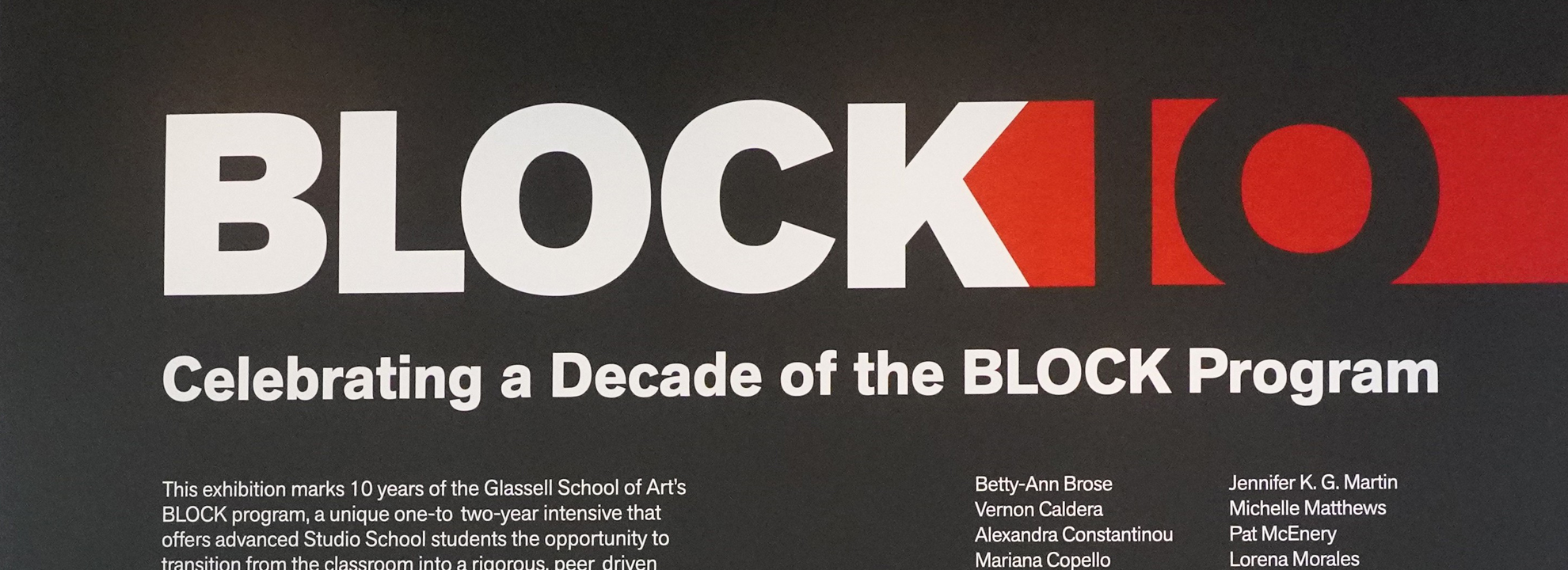In a city like Houston, one vast, improvisational, and definitely plural, artists often find their footing not through institutions, but through the communities that rise between them. The Glassell School of Art’s BLOCK Program, celebrating its tenth iteration, has become one of those rare spaces where making and belonging intersect, where a studio practice becomes a form of public conversation.
“It started almost serendipitously,” Fuchs said, the kind of origin that suits a program built to adapt. When the studios later disappeared, the structure held. “They then asked me to refashion the program so that we would still be offering enough without studios and kind of thinking about what this can be.” What emerged is the format BLOCK keeps each Friday: seminar in the morning, critiques in the afternoon, one long day of attention each week.
From the beginning, the BLOCK was defined less by institutional structure than by rhythm and repetition, the quiet persistence of showing up every week to see, to listen, to be seen. Fuchs describes the gatherings as the center of the program’s gravity. “Their first sense of belonging is to each other,” she said. “That’s their community; they’re accountable to each other first.” The year builds on that foundation: artists critique one another’s work, collaborate on small projects, and occasionally create together. By the end of the two-year cycle, they’ve built a network that extends far beyond the classroom. “I still see cohorts from eight or ten years ago who are connected,” Fuchs explained. “Their BLOCK peers remain their people.”
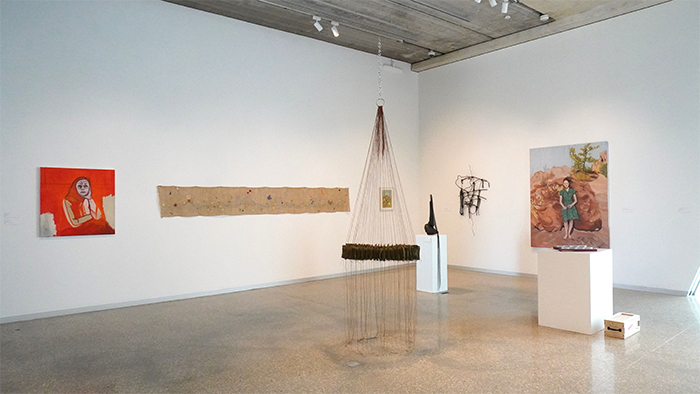
1 ⁄ 11
Installation view, BLOCK 10: Celebrating a Decade of the BLOCK Program, The Glassell School of Art. Photo courtesy of the MFAH.

2 ⁄ 11
Installation View, BLOCK XXV: The Magic Hour, The Glassell School of Art. Photo courtesy of the MFAH.
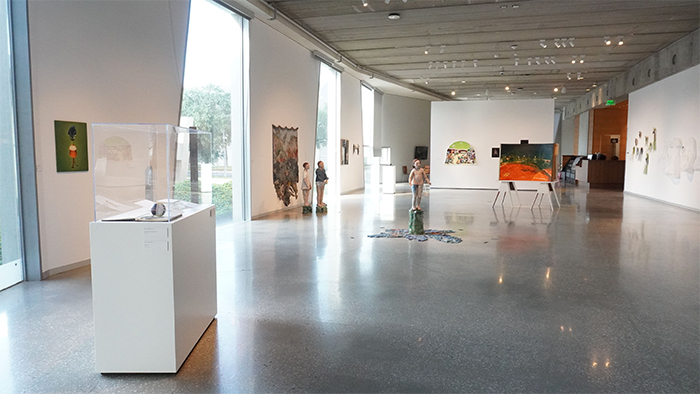
3 ⁄11
Installation View, BLOCK XXV: The Magic Hour, The Glassell School of Art. Photo courtesy of the MFAH.
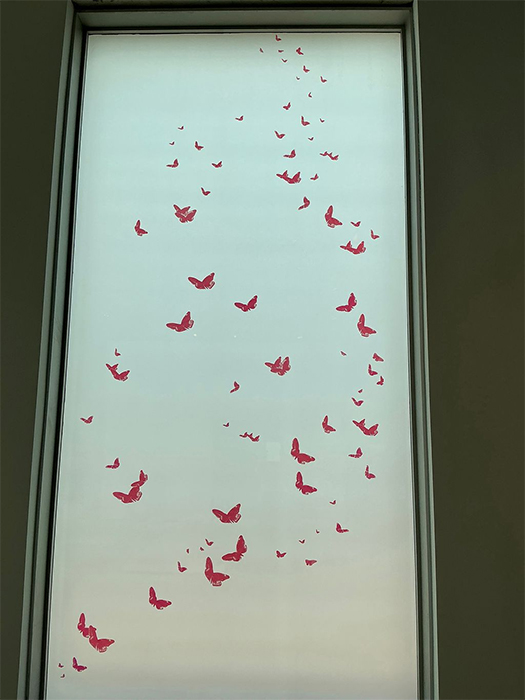
4 ⁄11
Michelle Matthews, The Houston Monarch Story, a Site-specific installation, vinyl window clings applied to a 13 ft frosted window, MFA Glassell School of Art, (2025)
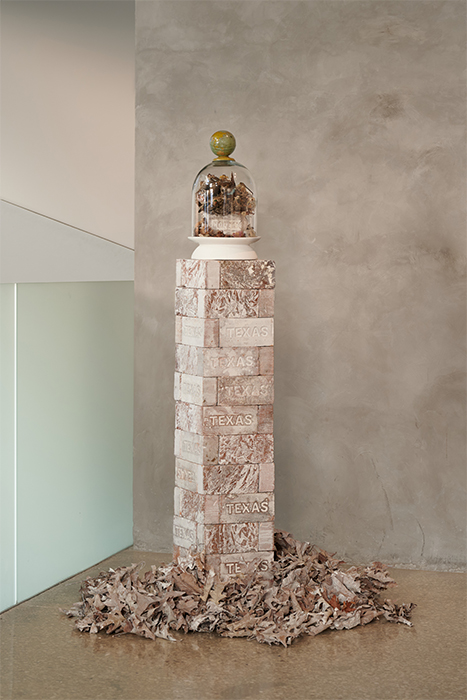
5 ⁄11
Cindee Klement, INTERDEPENDENCE II, Texas Bricks, Paint, Plastic Dome and Base, Vintage Globe Bank, Prop $100 bills, Coins from a diversity of economies, Paper Wasp’s nest on Maple tree leaves, Seashell with barnacles, Red swamp crayfish, bird nest, feather of a Pileated Woodpecker, Blue jay feathers, Mantis, Cicada, Great Purple Hairstreak, Tropical Checkered Skipper, White Peacock, Red-spotted Admiral, Monarch, Red lacewing butterfly, Red admiral butterfly, Checkered white butterfly, June Beetle, Eastern Carpenter bee, Wolf Spider, Beebalm, Sacred Datura, Bundleflower and various dried leaves. 60” X 36" X 36". Image by Feast Day Studio.

6 ⁄11
Katia Machado, Door to ancient memories, acrylic and sand on canvas, 2025.

7 ⁄11
Shang-Yi Hua, GOING HOME, Steel, pine cone, wire, 38”H, 10”W, 12”D.

8 ⁄11
Block participant Sarah Fisher at the Block X exhibition opening, with her 2025 oil-on-canvas, untitled self-portrait. Photo courtesy of the artist.

9 ⁄11
Juliette Hemingway, Unfolding the Trace, 2024. Installation (Coffee, charcoal, ink and acrylic on accordion books), 85”w x 88”h.
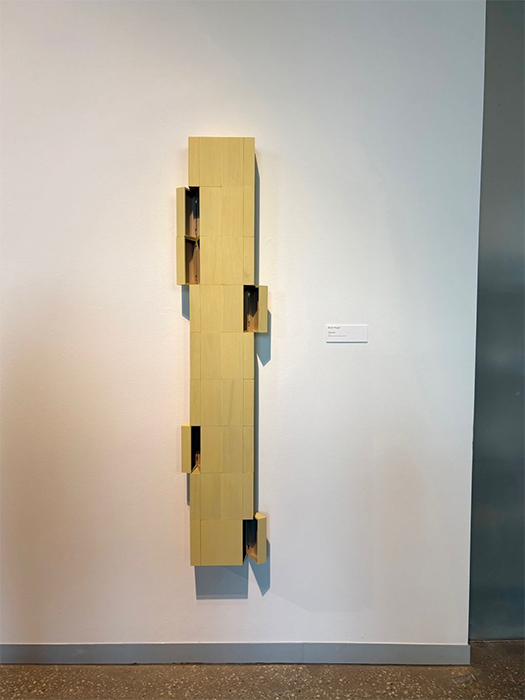
10 ⁄11
Katie Hagar, Platitudes, 2025 (yellow piece) Recipe boxes, plywood, glue, wood stain, 9”w x 59-3/4” x 4-1/2”d
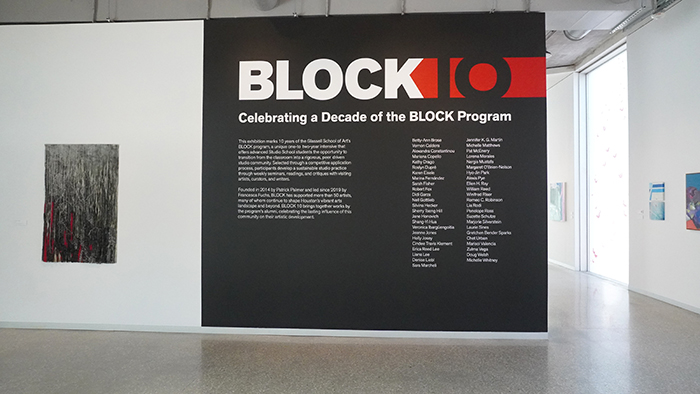
11 ⁄11
Installation view, BLOCK 10: Celebrating a Decade of the BLOCK Program, The Glassell School of Art. Photo courtesy of the MFAH.
The program’s design encourages that continuity. Each fall, six new artists join six returning ones, forming a layered group that carries shared experience forward. Some semesters focus on collaboration, others on site-based or community projects. The goal, Fuchs explains, is to help artists position their work in context, to understand not just how they make, but why. Hughes’s seminars reinforce that aim through readings and discussions on material, process, and writing. The combination allows artists to move between reflection and application, grounding ideas in practice.
Critiques unfold not with intensity but connection. A visiting artist might begin with a short roundtable, describing their own approach or tracing the arc of a recent project. Then come the individual visits, just sixteen minutes each. “The visitor’s goal isn’t to judge,” Fuchs said, “but to understand the work in context.” She reminds participants that critique is a dialogue, not an audition. “They’re not there to get something out of it professionally. It’s about deepening their understanding.”
After each session, artists write short reflections on what resonated and what unsettled them. Fuchs reads many of these logs herself, watching how perception shifts over time. When someone seems rattled by a visitor’s comment, she checks in. “My role is to help them hear their own voice,” she said. “To recognize which feedback is useful and which just reflects someone else’s lens.”
Over time, the program produces what Fuchs calls moments of reframing, points when an artist’s understanding of their work opens. She sees it happen regularly between the first and second year, sometimes as subtle shifts, sometimes as complete transformations.
She recalls sculptor Katie Hagar, whose meticulous woodworking practice evolved into a more exploratory approach during her second year. Hagar began using found objects, recipe boxes that could open and close in unexpected ways, discovering precision through curiosity rather than control. The change, Fuchs says, reflected a new confidence in thought over craft. “The BLOCK program was integral in improving my art practice,” Hagar reflected. “The combination of readings from the seminar portion and the many critiques from various critics, artists, and curators helped me find a language to define my work.”
Artists who have passed through the program often describe its influence as both professional and personal. Sarah Fisher (2016–2018) spoke of how it helped her build confidence as a working artist in Houston. Entering the program with the goal of becoming part of the city’s art community, she found that the mix of critique, mentorship, and peer exchange gave her exactly that: a credible place within the local conversation. For Cindee Klement (2017–2019), the structure of dialogue clarified the purpose of her work. “Engaging with the community created a space for reflection and conversation, helping me see how my personal experiences have shaped a unique perspective,” she explained. “This awareness not only gave me a clear purpose for my art but also transformed how I live and interpret the world around me.” Michelle Matthews (2015-2016) found the program to be a foundation for her creative growth as well, going on to complete an MFA in Sculpture at the University of Houston in 2023 after the program expanded her “perspective beyond the act of making, fostering a focus on artistic intent — understanding not just how a work is created, but why it exists.”
Other artists describe transformation in quieter terms. Shang-Yi Hau (2016–2018) recalled how the experience “was life-changing for me. I met many friends, and mentors, and it also allowed me to enter the art world. These factors changed my vision, identity, social circle (as a first-generation immigrant), even in daily life.” Recent participants echo that continuity. Juliette Hemingway (2024–2025) said the program gave her a framework for reflection, structure enough to steady her process, language enough to make it visible. And current participant Katia Machado (2025–2026) described the experience simply as “continuous growth,” a phrase that could double as the program’s mission.
For Fuchs, the key lies in commitment, the act of showing up, of giving time. Fridays run from morning to evening, and attendance is nonnegotiable. “We’re very strict about that,” she said. “No dropping in just for your critique. You’re there all day.” That persistence, she believes, is what builds the sense of trust the program depends on. “They hang together every Friday, all day. That’s how community is built, through time spent, not by accident.”
For those who pass through it, the BLOCK becomes that community, an enduring network built through care, repetition, and presence. What began as a temporary use of empty studios has evolved into something far more deliberate: a continuing conversation between artists who learn, year after year, that growth is less a leap than a sustained act of looking closely, together.
-MICHAEL McFADDEN

